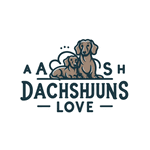Dachshunds, also affectionately known as wiener dogs, are small, short-legged hounds originally bred to hunt badgers. While their stubby legs and elongated bodies may not give the impression of speed, these determined little dogs can actually run surprisingly fast. In this article, we will explore just how fast dachshunds can run and what factors may affect their speed.
SEEMORE: Why Dachshunds Are The Worst Breed?
Contents
Dachshund Speed: The Numbers

The average dachshund can run at speeds of up to 15-20 miles per hour (24-32 kilometers per hour). This makes them faster than many other small dog breeds, such as Chihuahuas or Shih Tzus. Dachshunds are sprinters rather than long-distance runners. They can reach their top speed in just a few strides and maintain it for short distances. However, they will tire quickly if they try to run for long periods of time.
World Record Holder
The fastest dachshund on record is a long-haired named Little Dynamite. In 2018, Little Dynamite ran 100 meters in just 11.96 seconds, setting a new world record for the fastest dachshund. This impressive feat showcases just how speedy these little dogs can be.
Comparison to Other Breeds
While dachshunds may not be able to compete with larger, more athletic breeds like greyhounds or border collies, they are still quite speedy in comparison to other small breeds. For example, a Chihuahua’s top speed is around 12 miles per hour, while a Shih Tzu’s top speed is only about 8 miles per hour. So, in the world of small dogs, dachshunds definitely hold their own in terms of speed.
Physical Characteristics
So, what makes dachshunds so fast? Despite their short legs, dachshunds have a long, lean body that is built for speed. Their elongated spine and powerful hindquarters give them the ability to propel themselves forward with great force. Additionally, their small size and light weight make it easier for them to move quickly.
Factors Affecting Dachshund Speed

Several factors can affect how fast a dachshund can run, including breed type, size, age, and health. Let’s take a closer look at each of these factors and how they may impact a dachshund’s speed.
Breed Type
There are three main types of dachshunds: smooth, longhaired, and wirehaired. Smooth dachshunds are typically the fastest, followed by longhaired dachshunds, and then wirehaired dachshunds. This is due to the different coat types and body shapes of each breed. Smooth dachshunds have a sleek, streamlined body that allows them to move more efficiently, while longhaired and wirehaired dachshunds may have thicker coats and bulkier bodies that can slow them down slightly.
Size
As mentioned earlier, smaller dachshunds are generally faster than larger dachshunds. This is because their shorter legs have less distance to cover in order to reach their top speed. However, this does not mean that larger dachshunds are slow. They may just take a few more strides to reach their top speed.
Age
Just like with humans, age can also play a role in a dachshund’s speed. Younger dachshunds are usually faster than older dachshunds. This is because they have more energy and stamina, and their joints and muscles are still in prime condition. As dachshunds age, they may start to slow down and become less active, which can affect their speed.
Health
A healthy dachshund is more likely to be able to run and play at top speed. Any underlying health issues, such as joint problems or obesity, can slow a dachshund down and impact their overall speed. It’s important for dachshund owners to keep their dogs in good physical condition through regular exercise and a healthy diet to ensure they can reach their full potential in terms of speed.
Training and Exercise Tips for a Speedy Dachshund

Now that we know just how fast dachshunds can run and what factors may affect their speed, let’s explore some training and exercise tips to help your dachshund reach their full potential.
Short Sprints vs. Long Runs
As mentioned earlier, dachshunds are sprinters rather than long-distance runners. This means that they are better suited for short bursts of speed rather than long runs. So, when exercising your dachshund, it’s best to focus on short sprints rather than long runs. This will not only help them maintain their speed but also prevent them from getting too tired and potentially injuring themselves.
Incorporate Agility Training
Dachshunds are naturally agile and love to run and play. Incorporating agility training into their exercise routine can not only improve their speed but also keep them mentally stimulated. Set up an obstacle course in your backyard or take them to an agility class to challenge their speed and agility.
Use Positive Reinforcement
When training your dachshund to run faster, it’s important to use positive reinforcement techniques. Reward them with treats and praise when they reach their top speed or complete an agility course successfully. This will not only motivate them to continue improving but also strengthen the bond between you and your furry friend.
Conclusion

In conclusion, while dachshunds may not be known for their speed, they are surprisingly fast little dogs. With an average top speed of 15-20 miles per hour and a world record of 11.96 seconds for 100 meters, dachshunds can definitely hold their own in the world of small dog breeds. Factors such as breed type, size, age, and health can all play a role in a dachshund’s speed, but with proper training and exercise, these determined little dogs can reach their full potential and impress us with their speed and agility. So, the next time you see a dachshund running at lightning speed, remember that looks can be deceiving and these wiener dogs are much speedier than they appear.
